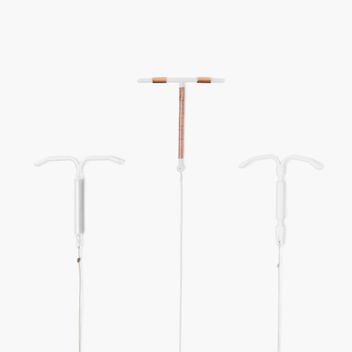Fertility Awareness
What are Fertility Awareness Methods?
Fertility awareness methods (FAMs) are ways to track your menstrual cycle and fertile days so you can prevent pregnancy. FAMs are also called "natural family planning” and “the rhythm method.”
What are the different kinds of FAMs?
Fertility awareness methods help you track your menstrual cycle so you’ll know about when your ovaries release an egg every month. This is called ovulation.
The days near ovulation are your fertile days — when you’re most likely to get pregnant. So people use FAMs to prevent pregnancy by avoiding sex or using another birth control method (like condoms) on those “unsafe,” fertile days.
There are a few different FAMs that help you track your fertility signs. You can use 1 or more of these methods to predict when you’ll ovulate:
-
The Temperature Method: you take your temperature in the morning every day before you get out of bed.
-
The Cervical Mucus Method: you check your cervical mucus (vaginal discharge) every day.
-
The Calendar Method: you chart your menstrual cycle on a calendar.
It’s most effective to combine all 3 of these methods. When used together, they’re called the symptothermal method.
The Standard Days Method is a variation on the calendar method. You track your menstrual cycle for several months to figure out if your cycle is always between 26 and 32 days long — you can’t use this method if it’s longer or shorter. Once you’ve established that your cycle is in the right range, you use another form of birth control (or don’t have vaginal sex) on days 8-19, which is when you’re fertile.
How effective are fertility awareness methods?
FAMs are about 77%–98% effective. That means 2–23 out of 100 couples who use FAMs will get pregnant each year, depending on which method(s) are used. If you use multiple FAMs together, they work even better.
The better you are about using FAMs the right way — tracking your fertility signs daily and avoiding sex or using birth control on “unsafe” days — the more effective they’ll be. But there’s a chance that you’ll still get pregnant, even if you always use them perfectly.
Fertility awareness methods don’t work as well as other types of birth control because they can be difficult to use. Want a more effective way to prevent pregnancy? Check out IUDs and implants. You can also pick what's important to you at the top of our birth control methods page, and we'll show you the methods that match.
How can I make FAMs more effective?
Like all birth control methods, FAMs are more effective when you use them as perfectly as possible. How well FAMs work also depends on both partners, so it’s important that each of you is supportive and learns how to use the methods.
FAMs are most effective when:
-
you work with a nurse, doctor, or counselor who knows FAMs well to learn how to use them correctly
-
you have the time and discipline to check your fertility signs and chart your cycle every day
-
you and your partner don’t mind avoiding vaginal sex or using another kind of birth control around your fertile days
The best way to use FAMs is to combine the temperature, cervical mucus, and calendar methods. Each of these methods relies on different signs to predict your fertile days, so using them together gives you the best picture of your fertility and makes FAMs more accurate. For example, keeping track of your cervical mucus pattern can be useful if your temperature chart gets messed up because you’re sick or stressed. And using more than 1 method may help you narrow down your fertile days, so you will have more safe days each month.
You can keep track of your mucus, days, and temperatures on a fertility awareness method chart like this one.
What do I need to know about my menstrual cycle and fertility?
In order to use FAMs, you’ve got to learn a lot about your menstrual cycle. You have to know when you’re most likely to get pregnant, and when it’s safe for you to have sex without risking pregnancy.
In order for pregnancy to happen, a sperm cell must join with your egg (this is called fertilization). During your menstrual cycle, there are certain days when it’s possible for sperm to fertilize an egg and cause a pregnancy — these are your fertile days.
Each month, your ovary releases an egg into your fallopian tube (this is called ovulation). Your egg is in your fallopian tube for about 12-24 hours. Sperm can hang out in your uterus and fallopian tube for up to 6 days after sex. If a sperm cell does join up with your egg in the tube, the fertilized egg travels from your fallopian tube to your uterus (womb) and can attach to the uterine wall, which starts a pregnancy. If your egg doesn’t get fertilized, it dissolves and you eventually get your period.
Since an egg lives about a day after ovulation and sperm live about 6 days after sex, you’re basically fertile for around 7 days of every menstrual cycle: the 5 days before you ovulate, and the day you ovulate. You can also get pregnant a day or 2 after ovulation, but it's less likely.
 Abstinence
Abstinence
 Breastfeeding
Breastfeeding
 Cervical Cap
Cervical Cap
 Condom
Condom
 Diaphragm
Diaphragm
 FAM
FAM
 Female Condom
Female Condom
 Implant
Implant
 IUD
IUD
 The Patch
The Patch
 The Pill
The Pill
 The Ring
The Ring
 The Shot
The Shot
 Spermicide
Spermicide
 Sponge
Sponge
 Sterilization
Sterilization
 Vasectomy
Vasectomy
 Withdrawal
Withdrawal